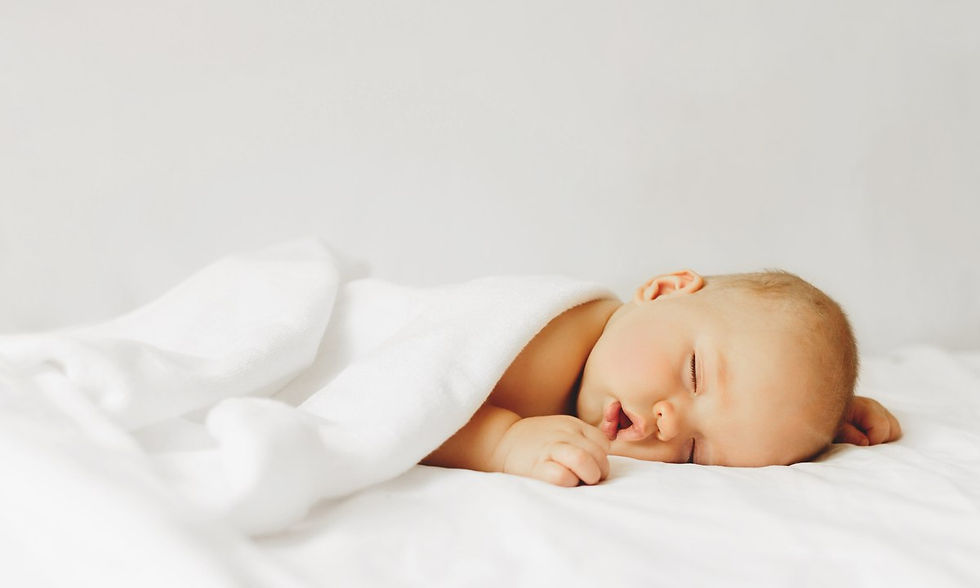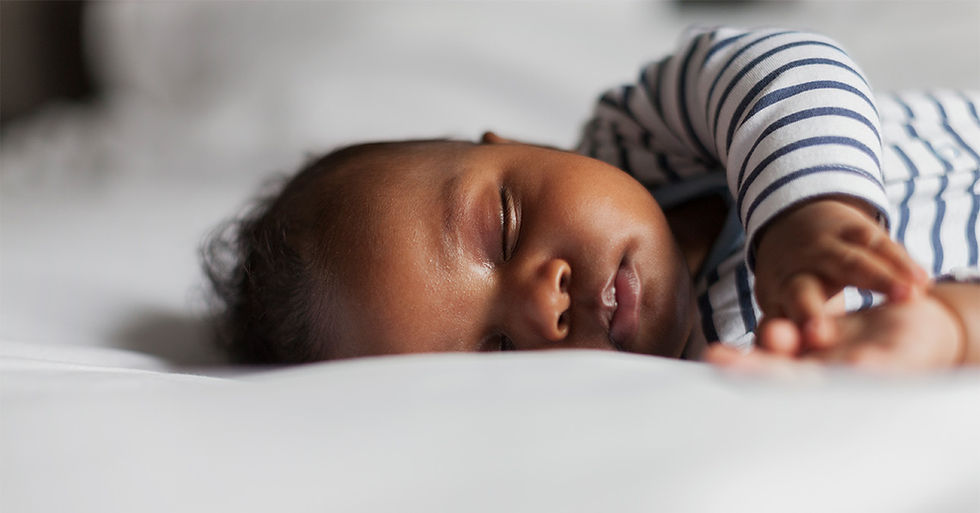White noise - and how it can help your baby sleep!
- Jackie Cox

- Mar 7, 2021
- 2 min read
You might have heard people talk a lot about white noise, especially in relation to sleep… but what actually is it and how can it help your little one?
White noise is a type of noise that is produced by combining sounds of all different frequencies together. If you took all the tones that humans can hear and put them together, you would have white noise.

It’s the gentle and consistent sound that can help to calm you baby. You may find that you naturally repeatedly say “shhh shhh” to your baby. White noise is a sound that mimics the sound of your heartbeat that your baby got used to while in the womb.
After spending months in the womb, babies can find all the new and strange sounds, smells and surroundings too overstimulating and stressful. All they were used to were sounds muffled by the amniotic fluid. So playing white noise at bedtime can help to recreate the sounds they were hearing while still in the womb.
Babies are also used to the sound of blood whooshing through the placenta and it’s been said that this noise is louder than a vacuum cleaner! One study has shown that playing white noise helped 80% of babies fall asleep within 5 minutes.
When a baby hears a consistent sound, they can focus on it to help them relax. And white noise has the added benefit of helping to block out any unwanted or sudden sounds that may startle your baby awake.

White noise should be kept fairly quiet- about the sound of a running shower. If in doubt, always err on the side of caution with the volume. Neonatal intensive care units are limited to 50 decibels when placed near the crib and a normal conversation is about 60 decibels for a frame of reference for how loud white noise should be.
White noise should be played continuously throughout the night or their nap, so I’d personally advise to avoid white noise machines that turn off after a certain amount of time and need to be manually switched back on. If your baby stirs or wakes up in the night, we want them to experience the same conditions that they fell asleep in as, in theory, this should help them learn how to connect up their sleep cycles independently.

Jackie Cox
www.jackiecoxsleepconsultant.com




Comments